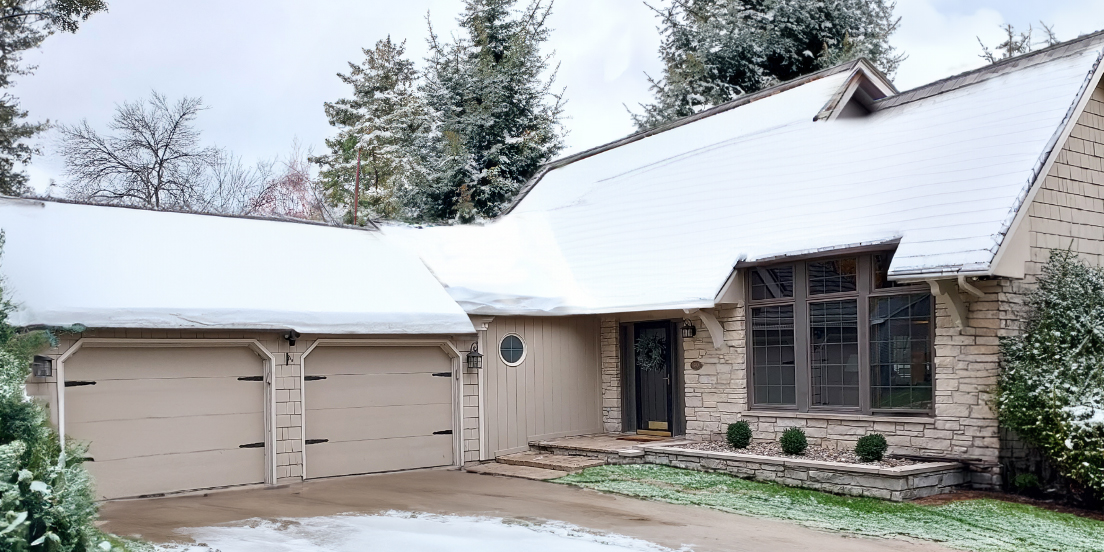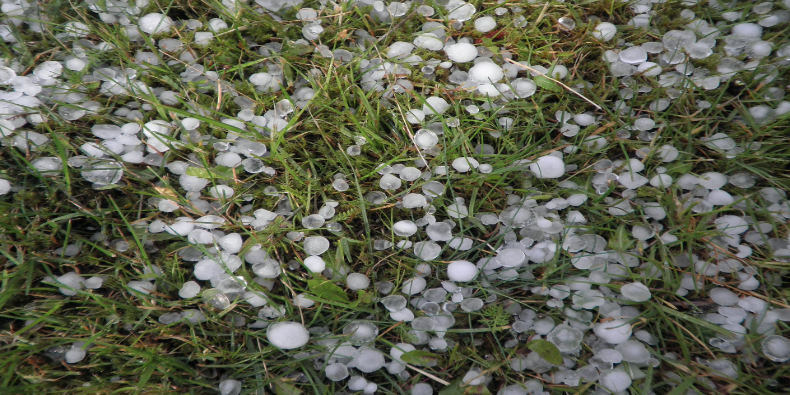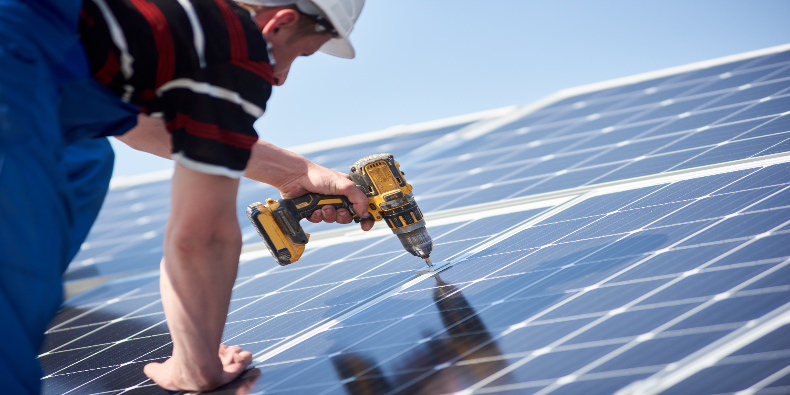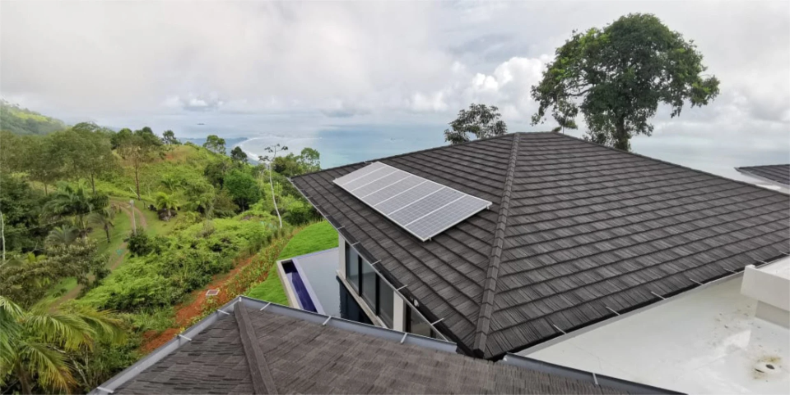Thinking about a winter roof replacement? Sometimes a new roof can’t wait for warmer weather. But is a winter installation actually possible?
In this blog, we answer the common question: can you replace your roof during winter? We’ll cover:
- The common challenges contractors face when replacing a roof in winter
- The conditions and materials that make winter roofing feasible
- What to look for in a roofing system designed for snow, ice, and fluctuating temperatures
You can replace your roof in winter, depending on your climate, contractor experience, and the roofing material you choose. Read on to see if a winter roof replacement is the right choice for you.
Winter Weather Challenges for Roofing Contractors
As you might imagine, weather during wintertime poses unique challenges that make roof remodeling jobs more difficult. In some cases, conditions mean a roofing project may need to wait until temperatures rise.
Safety and the Need for a Clear Roof Surface
Worker safety is always the top priority, especially in winter roof inspections. High winds increase the risk of slips and falls, and loose roofing materials can become dangerous projectiles that may damage the home or nearby property.
In addition, contractors cannot safely work on a roof covered with snow or ice. These conditions not only create slip hazards but also make it difficult to remove old roofing materials and properly install new ones. A clear, dry roof surface is essential for both safety and quality installation.
Protecting the Roof Decking
Rain and moisture can also make winter roofing challenging. The wood decking beneath your roofing material must be completely dry before a new roof is installed. If moisture becomes trapped under the new roofing system, it can lead to mold, mildew, and eventual wood rot. Ensuring the decking stays dry is critical to maintaining the structural integrity and longevity of the roof.
Sub-Zero Temperatures Freeze Progress
Sometimes it’s simply too cold for a roofing team to operate. Not only do workers lose their manual dexterity in extremely cold weather, some pneumatic tools freeze up and stop functioning when temperatures fall below freezing.
Shorter Days Reduce Available Work Time
Shorter daylight hours in winter also impact roofing timelines. With fewer daylight hours to work, some projects may require an extra day or two, particularly for large or complex roof structures.
So…Can You Replace a Roof in the Winter?
The short answer is: sometimes.
You need to have these conditions in place before starting a roof remodel:
- A roof surface that’s clear of ice and snow
- A relatively dry roof with no rain in the forecast
- Temperatures warm enough to operate tools
- A realistic schedule given reduced daylight
Why Asphalt Shingles Aren’t Ideal for Winter Installation
If temperatures drop below 40°F, asphalt shingles are generally not recommended. There are three key reasons for this:
- Asphalt installation requires adhesives that are activated by the heat of the sun. If those adhesives don’t activate properly, the asphalt shingles could blow right off the roof the next time there’s a good gust of wind.
- Asphalt shingles are extremely hard to bend and cut at colder temperatures, and they’re prone to cracking and breaking. However, in summer weather, roofing contractors don’t encounter these issues.
- You could void the manufacturer’s warranty on your asphalt shingles if you install them outside of the recommended temperature zone. Even if the job goes well, if you have a problem later, you may not be covered.
Fortunately, you don’t have to deal with any of these issues with a DECRA stone-coated metal roof. As long as your contractor says it’s safe to work and the roof is clear, you can install DECRA roofing during winter months. In many cases, it can even be installed directly over existing asphalt shingles, which helps reduce labor time, waste, and disposal costs.
There’s also a timing advantage to winter installation. Contractors often have more scheduling flexibility during colder months, giving homeowners more choice when it comes to dates and availability. And if you’re looking to improve curb appeal or boost property value, you don’t have to wait until spring—a stone-coated metal roof can increase home value by up to 6%, allowing you to realize that benefit sooner.
The Best Type of Roofing for Cold Climates
Many homeowners in colder regions are choosing DECRA stone-coated metal roofing not just because it can be installed during winter, but because it performs exceptionally well in freezing temperatures, heavy snow, and severe storms. DECRA offers advantages that traditional roofing materials, like asphalt shingles, wood shakes, and clay or concrete tiles, simply can’t match.
Stands Up to Heavy Snowfalls
Whether you’re in the Upper Midwest, northern New England, or even the mountainous regions of Southern California, you want a roof that can handle heavy snow. It was well publicized how a few years ago, homes in a popular Western ski area collapsed under the weight of snow after a major storm.
DECRA metal roofing is lightweight yet extremely strong, so it won’t stress your home’s structure. Its textured surface also helps snow shed more easily, reducing buildup and preventing excess weight from accumulating on the roof.
Resists Wind Uplift and Wind-Driven Rain
Winter storms often bring heavy winds and rain. DECRA roofing is tested to stay put, even in hurricane-force winds like those experienced in Florida. And its unique installation system leaves no tiny openings for wind-driven rain to enter. This helps protect the roof deck and the interior of the home from leaks and water damage.
Hail and Impact Resistance
Hail and flying debris can cause thousands of dollars in damage if a roof is not impact resistant. Wood shakes, clay tiles, and worn or cheap asphalt shingles can wind up with divots, cracks, warping, and leaks after a storm.
You can avoid hail- and impact-related insurance claims by choosing a roof like DECRA. It can hold up under hailstones as large as 2.5 inches across.
Helps Prevent Ice Damming
During winter, melting snow can refreeze at the roof’s edge and form an ice dam, forcing water back under the roofing material. This can damage soffits, eaves, insulation, and even interior ceilings.
DECRA roofing helps maintain a more consistent roof temperature, reducing the conditions that cause ice dams. Its reflective finish and energy-efficient design also help keep the home cooler in summer, potentially lowering cooling costs by up to 25%.
Preferred by Insurance Carriers
Because of all the benefits above, DECRA is helpful when looking for insurance discounts. Today many insurance companies are dropping coverage due to old or inadequate roofing. But with DECRA you don’t have to worry about that because metal roofing is less likely to be involved in an insurance claim. Not only that, it lasts two to three times as long as traditional roofing materials.
Request a Sample of DECRA for Your Winter Roof Remodel
Ready to explore winter roofing options with DECRA stone-coated metal roofing? Check it out up close! Just ask for a complimentary sample.
DECRA comes in a range of colors and profiles that look just like traditional shingles, shakes, and tiles to match your property perfectly. And the benefits extend well beyond winter: DECRA provides standout curb appeal, durability, and weather resistance through every season of the year.
Editor's Note: This blog was originally published in October 2023, but has been updated with relevant information.







